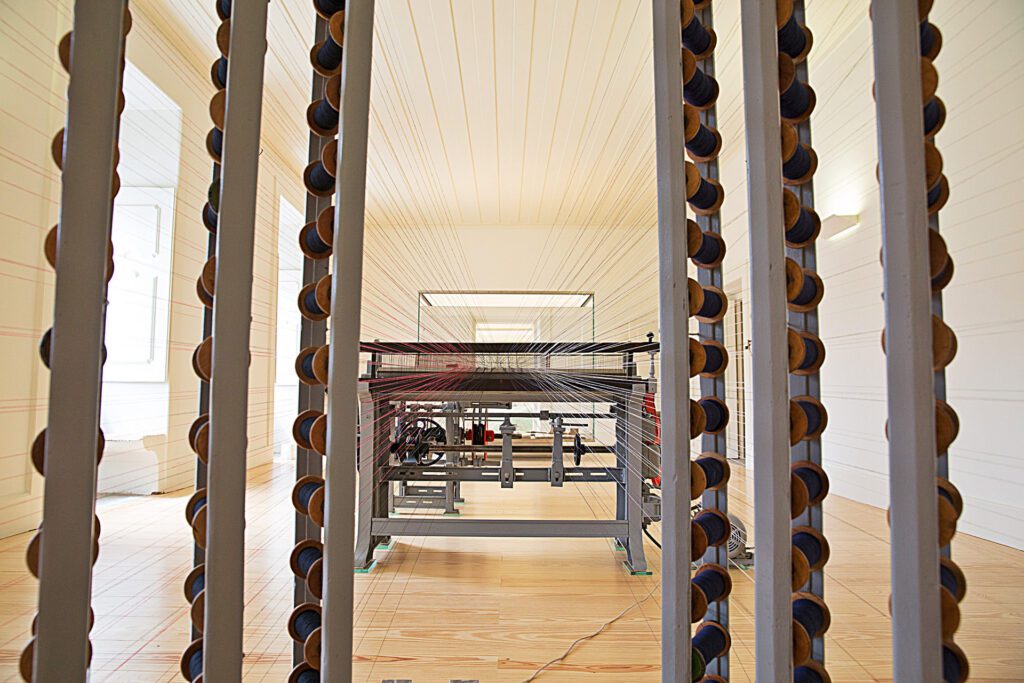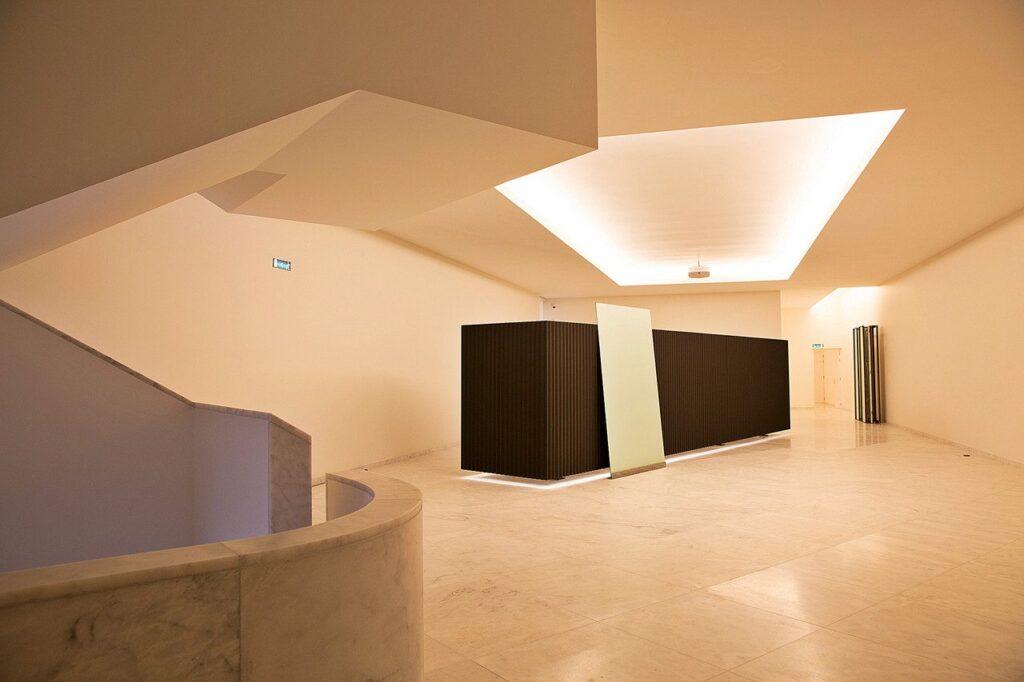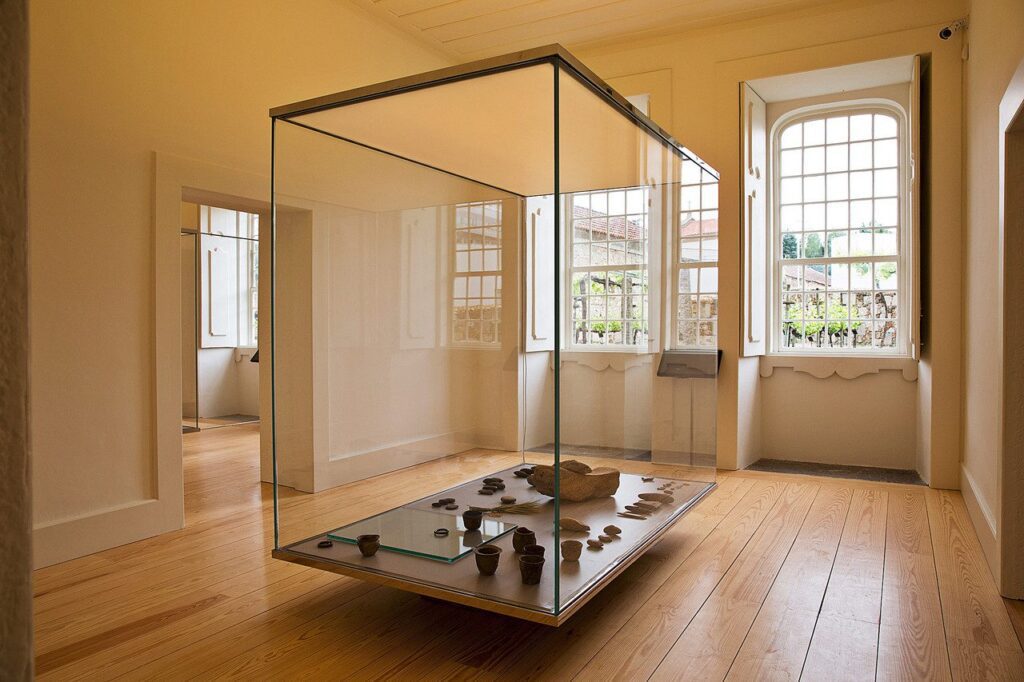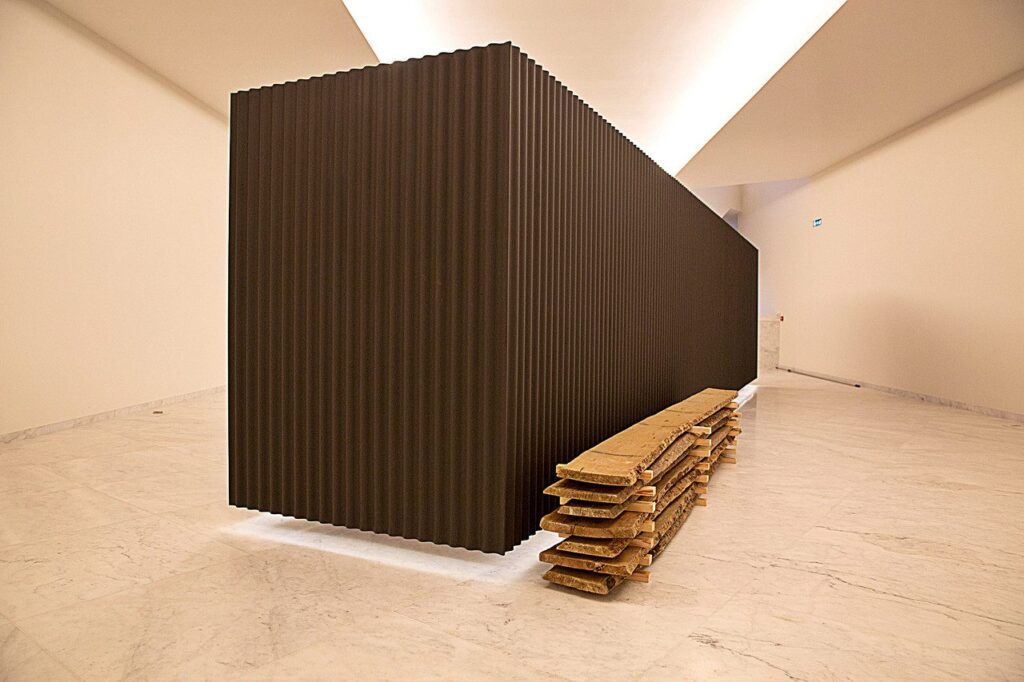His name is ‘Outro’, and he’s the architect of the new Museum of Sculpture in Santo Tirso. Do you know who he is?

With its inauguration scheduled for this Saturday, the newly built structure is connected to the renovated Abade Pedrosa Museum.
Not Siza, nor Souto Moura.
The author of the design for the International Museum of Sculpture in Santo Tirso is an architect named Outro (“Other”).
The surprise emerges midway through a conversation with Álvaro Siza Vieira.
Tomorrow will see the inauguration of yet another project created in partnership with his former student, close friend, and fellow Pritzker Prize laureate, Eduardo Souto de Moura.
When asked how they organize their collaborative work, he offers a disarming answer:
“The project is done by an other.”
“What?”
It’s an instinctive reaction of surprise—less a question than a spontaneous exclamation—that escapes the journalist’s lips.
Siza explains:
“In truth, the project is done by an other, which is the merging of two architects who enjoy working together.”
He takes the opportunity to share a story.
In 2005, they were invited to jointly design the Serpentine Pavilion in London.
Shortly after the inauguration, a friend of Souto Moura’s reached out to say the project didn’t look like his work at all.
A few days later, the same thing happened to Siza.
One of his own friends said the project didn’t seem like his either.
To which he replied—he recalls now—
“If it had looked like mine, we’d have to ask what Eduardo Souto Moura was even doing there.”

They enjoy working together, but they’re not a partnership or a shared practice.
Occasionally, they accept commissions as a duo.
The final result, Siza continues,
“is the work of an other, because it’s the outcome of the understanding between two architects who have a good relationship.”
There are no issues of “clashing egos,” he emphasizes.
The development of their work unfolds with complete ease, and the final result—as can now be seen in Santo Tirso—is an architectural proposal whose harmony emerges from the convergence of different design languages.
Very pleased with the final result, Álvaro Siza highlights the full support of the City Council as well as IGESPAR, which allowed for a swift and smooth completion of a building
“whose execution is good, which doesn’t always happen.”
Built from the ground up, the Contemporary Sculpture Museum connects with the Abade Pedrosa Museum and is part of the heritage complex that also includes the Monastery of São Bento.
Numa cidade que nas duas últimas décadas tem ocupado um espaço central na produção de escultura em Portugal, ao ponto de ter acumulado um dos mais originais e valiosos museus de escultura ao ar livre existentes em todo o mundo, Stº Tirso tem agora um edifício para acolher exposições temporárias e outras atividades culturais ou conferências.

The inauguration will feature “Casa Comprida com Luz e Outras Construções” by Carlos Nogueira.
The choice, explains Álvaro Moreira, the museum director, stems “from the nature of the work and its very significant proximity to architecture.”
Designed for this new space, the exhibition—titled as such, says Nogueira—
“functions as a kind of metaphor intended to be incorporated into the museum’s narrative so that this becomes a luminous house.”
The biggest challenge of this project was introducing a new structure connected to the old Abade Pedrosa Museum.
A new access was needed, taking into account the presence of a garden across from the site, which opens onto the upper level of the city.
There was also a chapel, originally from a nearby estate, which stood isolated on the grounds.
The architects chose to build a rectangular volume and created a connecting vertex to the convent.
The layout, Siza notes,
“was carefully designed to include the chapel in the composition, as it had been lost on the site.”
The architect regrets that there hasn’t been a comprehensive treatment of the old convent, “a beautiful piece of architecture.”
There was also significant restoration there, with a stunning solution for the gallery.
There is a sequence of six rooms that open into one another, creating an effect of transparency.
In this area, using videos in the corridor and objects displayed in the long showcases running through the rooms, a chronological narrative is created—from prehistory to contemporary times.

Having chosen to avoid heavy digital supports, there is a guided route to accompany the visit, with descriptions of the exhibited materials.
At the sculpture museum, the program included an atrium, a staircase leading to a lower floor where the exhibition space and support rooms are located.
There is a bar, a common entrance area shared by both museums—both with free admission—and a basement for archives.
Upcoming exhibitions are already scheduled, always designed with that specific space in mind.
The next will be by Valencian artist Miguel Navarro, followed by a group show featuring the 14 Portuguese sculptors included in the Sculpture Museum’s collection.
Each exhibition will last, on average, three months.
Álvaro Moreira draws attention to other areas of the new building, such as the educational services department and the documentation center, where the most comprehensive information about all the sculptures and sculptors represented in Santo Tirso will be made available.